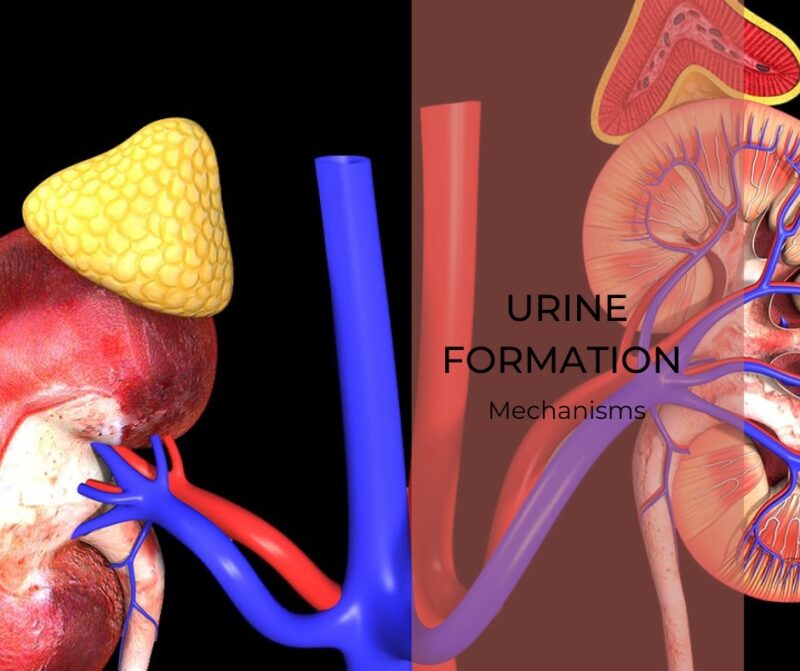Urine formation is a multi-step process that ensures our body maintains a stable internal environment. It begins with the delivery of blood to the glomerulus, followed by its filtration past the glomerular barrier.
The filtered portion of plasma then continues its journey through the nephron, while the unfiltered portion moves into the peritubular capillaries. As this filtered portion progresses through the nephron, certain solutes and water are reabsorbed back into the peritubular capillaries.
In contrast, other solutes are secreted from these capillaries into the nephron. The remaining fluid at the end of this journey is what we recognize as urine. In the following sections, we will explore the basic mechanisms involved in urine formation.
The Glomerular Filtration
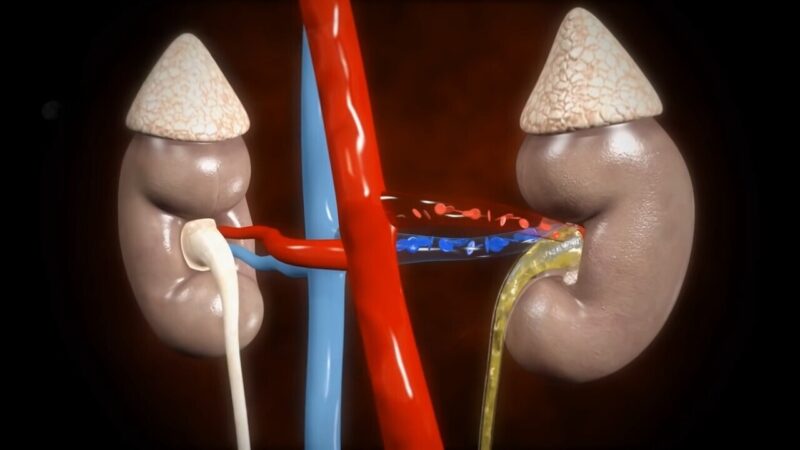
The glomerulus is the starting point of urine formation. It’s here that blood is delivered and filtered. The filtration process ensures that waste products, excess substances, and other unnecessary materials are separated from the blood.
- Blood Delivery: Blood is delivered to the glomerulus via the afferent arteriole. This arteriole carries blood rich in waste products and other substances that need to be filtered out.
- Filtration Process: As blood flows through the glomerulus, water, waste products, and other small molecules pass through the glomerular barrier, forming what is known as the glomerular filtrate. This filtrate then continues its journey through the nephron.
Functional Organization of the Glomerulonephronic Unit
The glomerulonephronic unit is a functional unit that plays a pivotal role in urine formation. It ensures that the filtrate is modified at various stages, allowing for the reabsorption or secretion of specific molecules.
- Blood Flow: Blood enters the glomerulus via the afferent arteriole and exits via the efferent arteriole. From here, it enters the peritubular capillaries that surround the nephron.
- Filtrate Modification: As the glomerular filtrate travels through the nephron, it undergoes various modifications. Specific mechanisms resorb or secrete small molecules, including water, into or out of the filtrate. These molecules then enter the interstitial fluid, where they non-specifically enter and exit the peritubular capillaries. The remaining fluid and molecules in the nephron are eventually excreted as urine.
Nephron: The Functional Unit of the Kidney
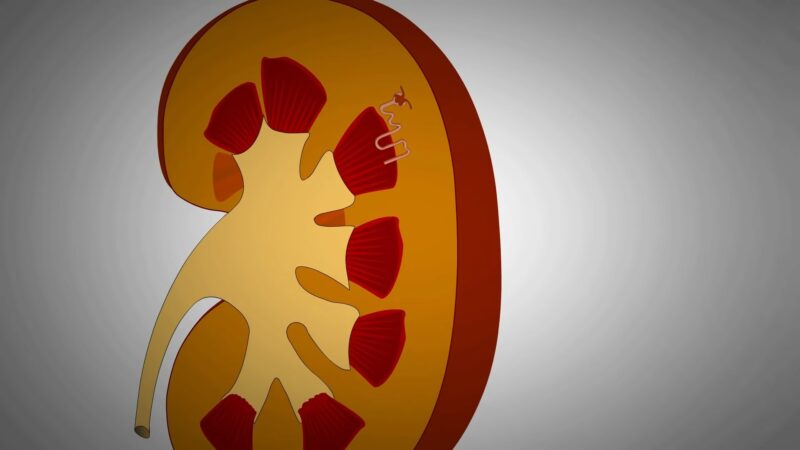
The nephron is often referred to as the functional unit of the kidney. It’s here that the glomerular filtrate undergoes several modifications, ensuring that only waste products and excess substances are excreted as urine.
- Structure of the Nephron: Each nephron consists of a renal corpuscle (containing the glomerulus) and a long tubular structure. This tubular structure is further divided into the proximal convoluted tubule, loop of Henle, distal convoluted tubule, and collecting duct.
- Role in Urine Formation: As the filtrate travels through these segments, water and solutes are reabsorbed based on the body’s needs. Hormones such as antidiuretic hormone (ADH) and aldosterone play crucial roles in determining the amount of water and solutes reabsorbed. The final concentrated or diluted urine is then passed to the ureters, ready for excretion.
The Journey Through the Nephron
The nephron is a marvel of biological engineering. As the primary unit responsible for urine formation, it ensures that our body retains essential nutrients while discarding waste products. Let’s continue our exploration by understanding the specific segments of the nephron and their roles in urine formation.
Proximal Convoluted Tubule (PCT)
The PCT is the first segment of the nephron tubule and plays a pivotal role in reabsorbing essential substances from the filtrate.
- Reabsorption Mechanism: Nearly 65% of the filtered sodium and water, along with glucose, amino acids, and other vital nutrients, are reabsorbed in the PCT. This process is both active and passive, ensuring that the body retains these essential substances.
- Secretion Process: The PCT also secretes substances like hydrogen ions, ammonia, and certain drugs into the filtrate. This secretion helps in maintaining the body’s pH balance and removing unwanted substances.
Loop of Henle
The Loop of Henle is a U-shaped structure that dives deep into the renal medulla. It plays a crucial role in concentrating the urine and conserving water.
- Descending Limb: As the filtrate descends, it becomes more concentrated due to the passive reabsorption of water. The surrounding medulla’s high osmolarity ensures that water moves out of the filtrate and into the surrounding interstitial fluid.
- Ascending Limb: In contrast, the ascending limb is impermeable to water. Instead, it actively pumps out sodium, potassium, and chloride ions, making the filtrate more dilute as it ascends.
Distal Convoluted Tubule (DCT)
The DCT fine-tunes the filtrate composition, ensuring that the body retains essential ions while discarding excess ones.
- Ion Exchange: The DCT actively secretes ions like potassium and hydrogen into the filtrate while reabsorbing sodium and calcium. This ion exchange is influenced by hormones like aldosterone and parathyroid hormone.
- Acid-Base Balance: The DCT plays a significant role in maintaining the body’s acid-base balance by secreting hydrogen ions and reabsorbing bicarbonate ions.
Hormonal Regulation in Urine Formation
Hormones play a vital role in regulating urine formation, ensuring that our body maintains its internal balance even under varying conditions.
Antidiuretic Hormone (ADH)
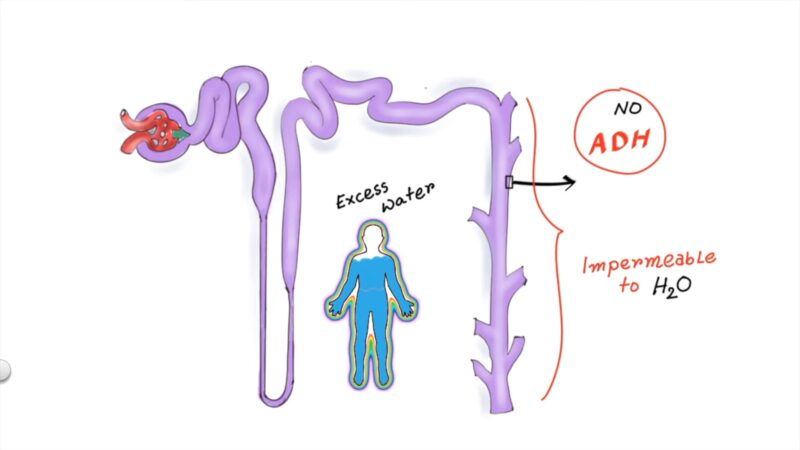
ADH, also known as vasopressin, is released from the posterior pituitary gland and plays a crucial role in water conservation.
- Mechanism of Action: ADH increases the permeability of the collecting ducts to water. This action ensures more water is reabsorbed from the filtrate, leading to the production of concentrated urine.
- Regulation: The release of ADH is influenced by the body’s hydration status. When the body is dehydrated, more ADH is released, leading to water conservation. Conversely, when the body is well-hydrated, ADH release is reduced, resulting in dilute urine.
Aldosterone
Aldosterone is a steroid hormone produced by the adrenal cortex. It plays a pivotal role in sodium and potassium balance.
- Mechanism of Action: Aldosterone promotes the reabsorption of sodium ions and the secretion of potassium ions in the DCT and collecting ducts. This action helps in retaining sodium while excreting excess potassium.
- Regulation: The release of aldosterone is influenced by factors like blood volume and blood pressure. A decrease in blood volume or pressure triggers the renin-angiotensin-aldosterone system, leading to increased aldosterone release.
The Collecting Ducts and Final Urine Concentration
The collecting ducts are the final segments of the nephron, responsible for the last adjustments to the filtrate before it becomes urine. Their primary role is to ensure that the body produces urine with the right concentration, depending on its hydration status and other physiological needs.
Water Reabsorption in the Collecting Ducts
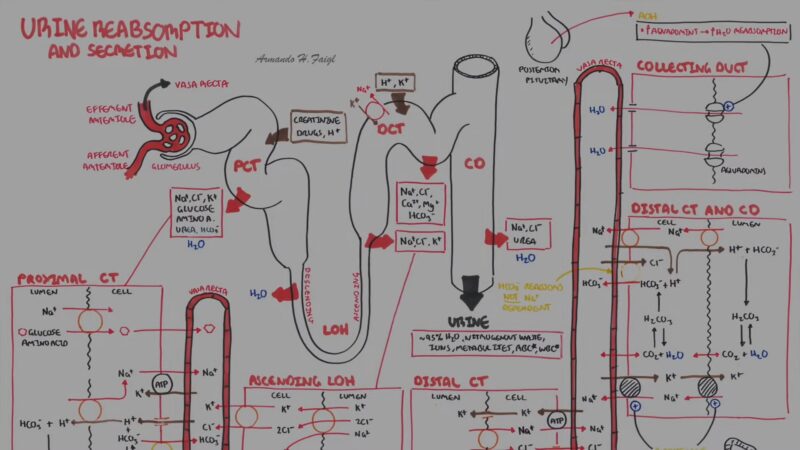
The collecting ducts play a pivotal role in determining the final concentration of urine.
- Role of ADH: As mentioned earlier, ADH increases the permeability of the collecting ducts to water. In the presence of high ADH levels, more water is reabsorbed from the filtrate, leading to concentrated urine. In contrast, low ADH levels result in dilute urine as less water is reabsorbed.
- Countercurrent Mechanism: The unique arrangement of the Loop of Henle and the vasa recta (blood vessels surrounding the Loop of Henle) creates a countercurrent multiplier system. This system ensures a high osmolarity in the renal medulla, facilitating water reabsorption from the collecting ducts.
Final Adjustments and Urine Excretion
As the filtrate moves through the collecting ducts, final adjustments are made to its composition, ensuring that the body retains essential substances while discarding waste products.
- Urea Recycling: Urea, a waste product, is partially reabsorbed in the collecting ducts. This reabsorption contributes to the high osmolarity of the renal medulla, aiding in water reabsorption.
- Acid-Base Balance: The collecting ducts also play a role in maintaining the body’s acid-base balance by secreting hydrogen ions into the filtrate.
Final Words
The process of urine formation is a testament to the body’s incredible ability to maintain its internal environment. Through a series of intricate mechanisms and the coordinated action of various segments of the nephron, the body ensures that essential nutrients are retained while waste products are efficiently removed.
Understanding these mechanisms not only provides insights into renal physiology but also underscores the importance of maintaining kidney health for overall well-being.

